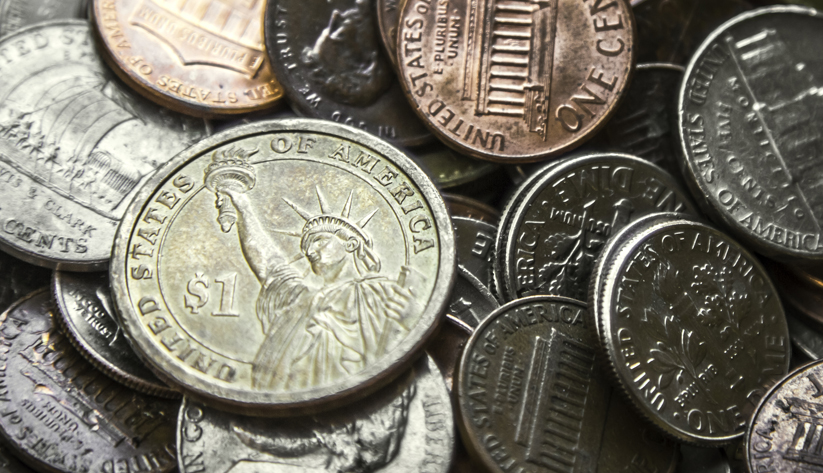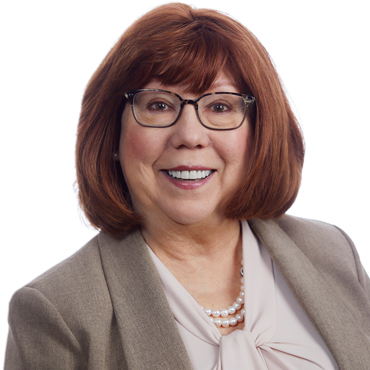
If you’ve visited a retailer lately, you may have encountered the coin “shortage” that has led some stores to prohibit cash because they can’t make change.
Retailers are devising various schemes to acquire coins or make change in novel ways. A convenience store chain is offering a free beverage or sandwich in exchange for change, according to media reports.
What normally goes around is not coming around
In a strict sense, however, there is no coin shortage. The volume of coins in the economy is at its typical level -- north of $40 billion. The problem is that, with most people staying home and many businesses closed amid the COVID-19 pandemic, the usual numbers of coins are not coursing through the economy but are accumulating in cups, piggybanks, drawers, and between couch cushions in many of the 128 million U.S. housebound households.
“It’s not a supply problem—it’s a circulation problem. There’s very little commerce, so coin just isn’t moving,” said Amy Goodman, a vice president in the Atlanta Fed’s New Orleans Branch, who oversees Fed cash operations across the Southeast. “There’s plenty of coin to meet demand. It’s just not in the right place to meet that demand.”

Atlanta Fed's Amy Goodman. Photo by David Fine
Coin deposits to financial institutions are off by more than half from individuals, businesses, and companies that operate coin-sorting machines in supermarkets and other locations, according to the Federal Reserve Board of Governors. This plunge in the number of coins entering the system in turn chokes off their normal flow through the economy because deposits to banks are a major source of coins that the Federal Reserve takes in and then distributes to financial institutions. Reserve Banks store coins in vaults and use them to fill orders from financial institutions. On average, each year more than 20 billion coins valued at more than $2 billion pass through the Federal Reserve’s coin distribution hubs.
But a reduced flow of coins to banks and retailers is not the only factor causing a perceived shortage. Early in the pandemic, the U.S. Mint—the Treasury Department unit that produces coins and serves as their official purveyor—took steps to protect employees from the coronavirus, and these measures reduced production. The Mint subsequently increased production above its normal volume.
But simply minting more coins will not untangle the circulation snags, Goodman said. Instead, normal circulation will likely resume when financial institutions and consumers return traditional volumes of coins into the circulation system—through coin recyclers, retailers, and financial institutions.
Because banks and other financial institutions are key cogs in the coin distribution network, the Fed and the U.S. Coin Task Force have encouraged financial institutions to help the economy regain normal coin circulation. A few examples of what financial institutions can do:
- Order only what they need to meet customer demand, and not more.
- Make it easy for customers to deposit coin. Though some institutions already accept coins from the public, the Federal Reserve encourages financial institutions to reduce or eliminate barriers the public may encounter when attempting to deposit coins. For instance, banks can accept for deposit unwrapped coins.
- Pay out as much coin as possible. In normal times, wholesale and retail distributors tend to hold up to a month’s worth of inventory. Given the current lack of coin movement, distributors of coins could pay out as much coinage as possible, keeping only enough working inventory to ensure that customers have fair and equitable access.
- Encourage employees and the general public to cash in their coins. Since the initial hiccups in coin availability, the Federal Reserve has encouraged its employees across the country to take coins to their local financial institution, spend them at local retailers, or cash them in at a coin-sorting machine. Fed employees began to post images of themselves depositing coins on their personal social media accounts using #getcoinmoving. The U.S. Coin Task Force has also issued a public call to action to all Americans to return their spare change into circulation. Every little bit helps.
Hard data describing the supply issues are scarce for now. It is next to impossible to quantify in real time the coins coursing among consumers, businesses, financial institutions, and coin recyclers, Goodman noted.
The good news, she pointed out, is that coin circulation is inching toward normalcy. When the circulation disruptions began, and the Fed’s inventories dwindled, Reserve Banks allocated reduced volumes of coins to financial institutions under a plan to ensure that banks of all sizes got equal treatment. As more inventory became available, the Fed began pushing out supplies more aggressively. Yet moving coins quickly requires a balancing act, as Reserve Banks seek to avoid running out of certain coins—a situation known as “stock outs.”
“The picture is slowly improving,” Goodman said, “but won’t be resolved until coins begin circulating freely throughout our economy again. Given that about 80 percent of the coins needed in any given year are previously minted coins that travel through our transactional networks, we need those coins to make an appearance again in our businesses and depository institutions.”




